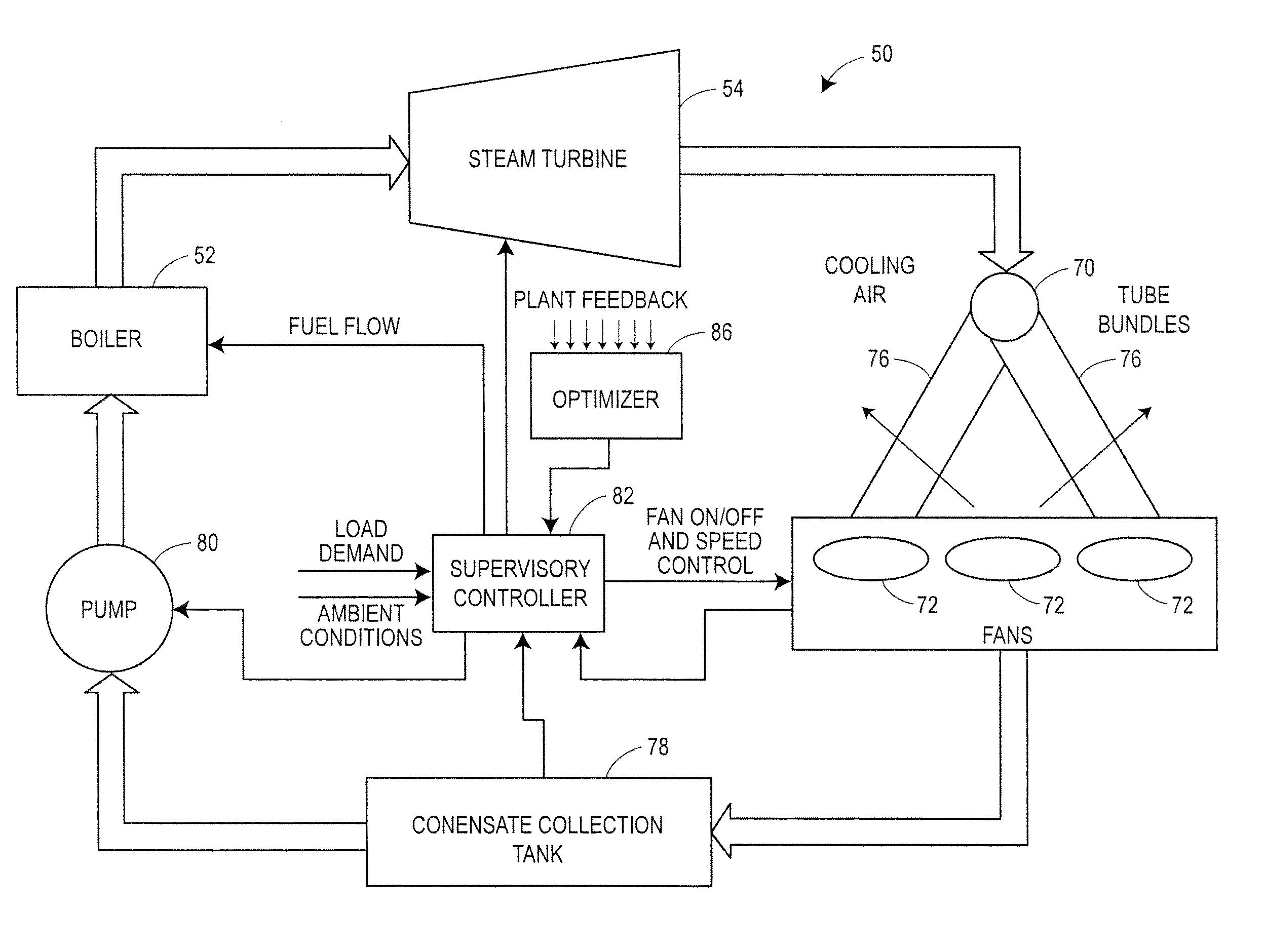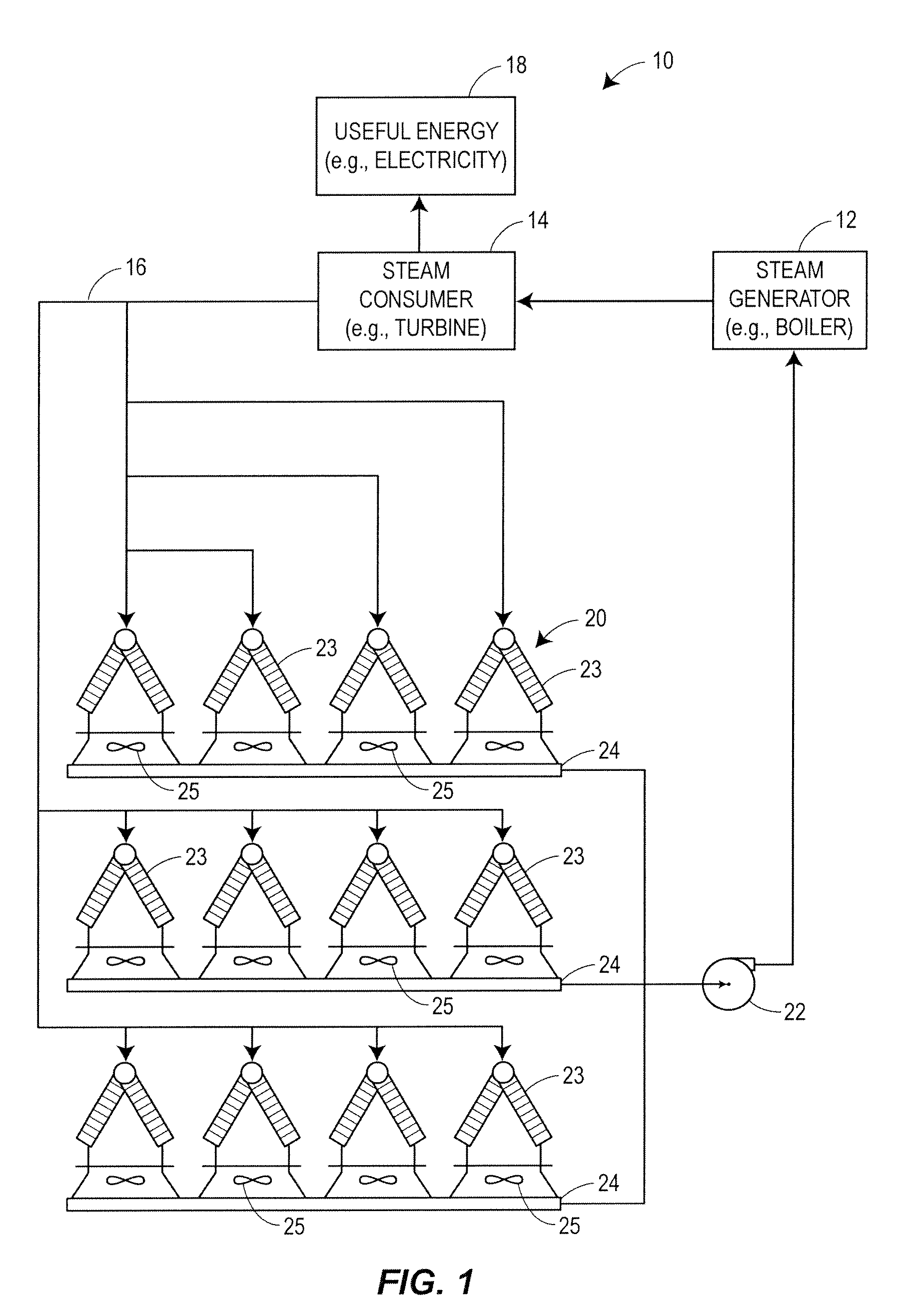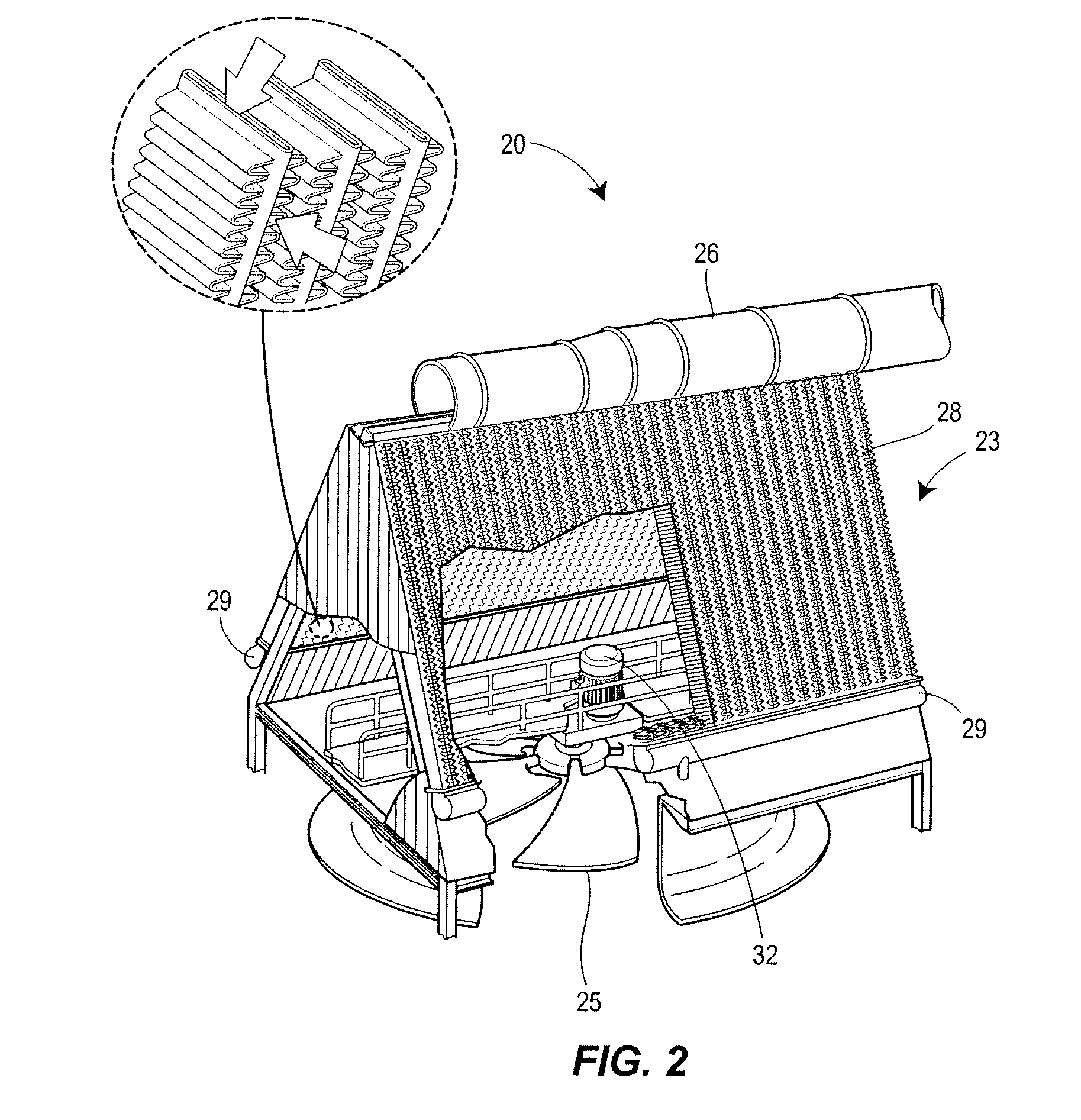While the
electric utility plants which use these various different types of power generation methodologies operate using different implementation technologies, these plants are always operated under a set of constraints applicable to the particular methodology being applied.
One example of constraints encountered in these types of plants (i.e., power plants using boilers or other similar
steam generation technologies) that affects the efficiency of the plant includes the set points of the
steam temperature used at the final super-heater and re-heater outlets of the boilers.
On the other hand, if the
steam temperature is too low, it may contain water particles which may also cause damage to components of the
steam turbine.
Unfortunately, water is often a limited or scarce resource, and thus may not be in sufficient supply at any particular power plant site.
Many countries, such as China, are very concerned about stressing water supplies and so have limited the use of water in these types of power plants.
In some regions, especially dry and
arid regions, the use of lake and
river water is tightly regulated, and so it may not be possible, or it may be very costly to use a large amount of
fresh water in a power plant cooling
system.
Still further, once-through cooling systems, while consuming very little water because they return most of the water to the source, still heat up the water, which in many cases leads to undesirable environmental impacts.
However, the large volume of water withdrawn by a once-through cooling
system can entrain and impinge
aquatic organisms, and discharges heat to surface waters which may have adverse ecological effects.
As a result, most United States jurisdictions now discourage or prohibit construction of new power plants that use once-through
water cooling systems.
However, because re-circulating cooling systems cool by
evaporation in towers or cooling ponds, they consume more water than once-through cooling systems.
Moreover, in re-circulating cooling systems, the cost to treat and dispose of cooling water varies much more widely, depending on the characteristics of the
raw water being used.
For example, low pH is an issue for water pumped from spent
coal mines, and the
effluent of oil and gas well operations can have high levels of salts, silica, and
hardness.
In any event, because water is becoming a scarce commodity, and the use of water in re-circulating cooling systems can be expensive, plant designers are, more and more, considering direct dry cooling systems, also called air cooled condensers.
However, the
large size of the hyperbolic
tower makes the natural draft option a niche application and this type of cooling system is typically only able to be economically used at small power plant sites.
Single speed fans do exist, however, as they create a lower installed cost, which is sometimes the only concern of the plant designer.
In any event, if single speed, multiple speed or continuously variable speed fans are used within a plant, the optimum combination of fans to run in any particular situation other than the designed maximum load condition, and speed at which to run these fans to obtain the appropriate cooling within the re-circulating system is generally unknown and not easily predicted, as it involves solving for an elusive multidimensional point in the operational space of the cooling system.
Moreover, changing the speed of and the number of fans running within a condenser system may change the backpressure at the steam
turbine, resulting in a less than expected or designed heat rate, which is typically used as the measure of
plant efficiency.
Thus, while utility plants that use electric powered air cooled condensers are designed to have enough fans to operate at full load and at the worst ambient conditions (e.g., the highest ambient temperature, worst
humidity, etc.), operators generally do not have any ability to gauge how many fans to use, and at what speed to run the fans, at lower then maximum load and / or at more favorable ambient conditions.
Unfortunately, running the electric fans of the air cooled condensers uses
electric energy (created by the plant) and thus reduces the final output of the electric plant, thereby increasing the cost of the electrical power generation being performed.
Standard methods of operating the air cooled condensers therefore typically result in a plant being less efficient than is possible, resulting in higher costs to run the plant for a given energy output.
 Login to View More
Login to View More  Login to View More
Login to View More 


